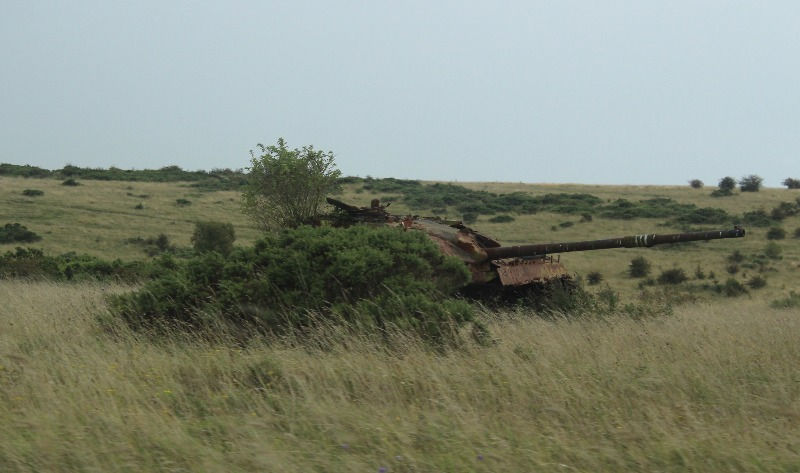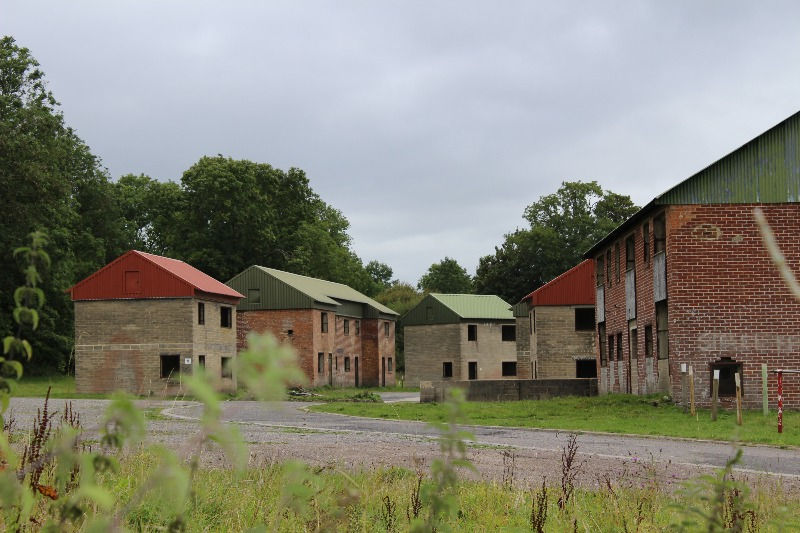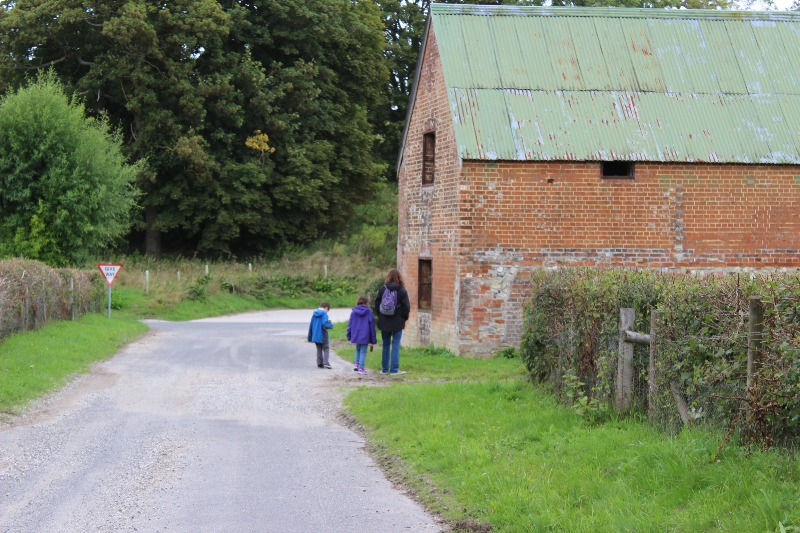FROZEN IN TIME - THE GHOST VILLAGE OF IMBER
- Sarah

- Oct 17, 2020
- 6 min read
Updated: Oct 2, 2023
In 1943 when Britain was in the grip of World War II, the decision was taken by the Allied leaders to invade France. As plans were made for Operation Overlord, there was a need for somewhere to train over 150,000 men. The war cabinet selected suitable locations, and within weeks residents of these villages were given formal notice to leave their homes. Of the villages specifically requisitioned for D-Day, two can still be visited today, Imber and Tyneham.

Imber, a small village in the middle of Salisbury Plain in Wiltshire, has a history that can be traced back to the Iron Age with evidence for a small settlement in the area. Imber was later specifically mentioned in the Domesday Book with just seven households. The church of St. Giles was built in the 13th century and the village also had a manor house, a Baptist chapel, a schoolroom and a pub as well as residential properties.

The village was always very isolated due to its remote location, with the villagers working closely connected to the land and agriculture.
The population of Imber never went over 440 and by the 1940s it was down to 150, as Imber was affected by changes brought about by the introduction of mechanised farming equipment and greater mobility for inhabitants, even in this remote area.
In the 1920s the military, who already owned a great deal of land around the village, started buying up farms and properties, leasing them back to the villagers.
Times were hard and many welcomed the extra money, little realising what the military’s long term plan was.
In 1942, Imber was the scene of a rehearsal for a tactical demonstration of airpower, when Spitfires and Hurricanes were to demonstrate hitting targets on the ground in front of Churchill and other dignitaries. The event was watched by many spectators, both civilian and military. One of the pilots, a 21 year old American, mistook the spectators for dummies as part of the demonstration, and opened fire. 25 people were killed, some of them Home Guard residents of Imber.
The tragedy is referred to as the ‘Imber Friendly Fire Incident’, and one can only imagine how the residents of Imber felt when 18 months later, they were ordered to leave their homes. With the plans for the D-Day invasion in full swing, and the need for more space to prepare for the D-Day landings, specifically for the American troops to practise urban fighting, it was easy to remove the villagers when they were just leaseholders and tenants.

They were told in November 1943 at a public meeting in the schoolroom, being given just 47 days’ notice with not even one final Christmas in their homes before they had to leave by 17th December.
Most villagers went peacefully, doing their bit for the war effort, although a few had to be forcibly ejected. The local blacksmith was found sobbing over his anvil on the day of departure; he died only one month later from a broken heart, and was the first resident to be allowed to return to the village for burial.
Residents received no compensation, as they did not own their land, and were not given anywhere to go, only travelling expenses and the value of their garden produce. Relying on family and friends, they had to start their lives all over again, far away from the homes they loved and the community they grew up with.

For many years the military denied that they had promised that the residents could return after the war, and court cases were held to determine if the villagers could return home.
Although the original eviction notice promising they could return was eventually found, the judiciary still found in favour of the military and the village has remained under military control.
The church was never relinquished and is now owned by the Churches Conservation Trust, who may own the church, but the MOD still controls the access to it. The House of Lords ruled that the church must always be allowed a public service on the Saturday nearest St. Giles Day, September 1st. It is also usually open at Easter, Christmas and some Bank holidays, it varies considerably.
Old Photographs © Imber Village
IMBER TODAY
We visited Imber on a bleak and foggy day, even though it was August, with a long drive across the barren Salisbury Plain, down narrow and unfamiliar roads that all looked the same. Imber is right in the middle of a restricted training area and the access roads on all sides are only opened at certain times of the year. Imber sits a good 5 miles in the centre.

The journey takes you past military checkpoints, mournful looking cows and roads lined with barbed wire and danger signs telling you not to leave the roadway. On each side of us, the rusted shells of blown up tanks appeared out of the gloom as we drove past, lending an air of morbid desolation to the journey.
On arrival in Imber there are several large parking areas, with no parking charges. There are a lot of signs telling you that you cannot wander where you wish and you must stick only to the roads. The buildings are mostly intact, albeit with no windows and tin roofs replacing the original ones, but you are not allowed in them as they are not structurally safe enough and may contain unexploded ammunition.
The focal point of the village is St Giles Church, the only active building left in the village. Outside the churchyard is fenced off with barbed wire but the church itself is welcoming and active, with light streaming through the stained glass windows, comprehensive displays about life in the village and people selling homemade jams and cakes. Church services are sometimes held here and there was a real sense of people fighting the odds to keep the place alive.

The rest of the village, which you can only admire from the road, looks uninviting and rather gloomy. The houses have lost their sense of being homes, they just look like shells, some with shuttered windows and set back from roads which are designed for tanks, not people.
Even though they are complete structures, it is hard to imagine an active and bustling village life here, which it clearly once was, based on old photographs. As many of the original buildings were destroyed or knocked down over the years, the MOD have built some of their own – bare shells of bricks, breeze blocks and tins roofs in browns, greys and greens that form a make-believe housing estate for the military to practise urban warfare. They are fascinating but slightly ominous.

The landscape around the village is not particularly inviting, as Salisbury Plain is a high chalk plateau of open plain and fields where the wind picks up and rolls through the dry valleys.
Around Imber the vegetation is cut back, the grass is cut short and the trees seem to tower over the buildings rather than blend in. There are no remnants of gardens or communal village areas, just isolated brick houses in the barren grass looking very inaccessible and displaced. The prevalence of barbed wire and danger signs adds to the sense that this is a village that has been completely consumed by its military owners.

Imber really does feel like a true ghost village, one that has had its heart ripped out and where I found it difficult to be able to imagine the lives of the previous inhabitants.
It is an interesting place and is well worth a visit, particularly as the MOD keep reducing the amount of available public access days, so it wouldn’t surprise me if they stop altogether at some point in the future.
It is a desolate place; very different to the other ghost village in this part of the country, Tyneham. Tyneham is the village I would truly advise visiting. It was beautiful, charming and still felt alive, as if the traces of the inhabitants were still there, hiding just out of sight in the undergrowth. It was poignant rather than bleak, affirming rather than depressing and the perfect backdrop for the imagination to flourish..
Visiting Imber
How to get to Imber Imber is not signposted and has no postcode for satnavs, as well as no mobile phone service. Click here for detailed directions.
Imber Opening days These vary considerably although usually include Easter, some days over August and Christmas. Check here for more detailed information. It is also worth following Imber Church on Facebook as they post the latest information on there.
Always check the that the site is open before setting out as last minute changes can occur. Imber Parking Costs Free
Essential Information for visiting Imber It is imperative that people do not stray from the paths or go inside any of the properties other than the church. The MOD may restrict all future public access as visitors keep ignoring the rules by trespassing. There is a risk of injury or death if you do so. You can also be prosecuted by the MOD.
Good to Know The church sells home made cakes, tea and squash. There are no bins on site so you must take your rubbish home. Dogs are allowed but again their rubbish must be taken home too. The church usually provides temporary portable loos for visitors.
The Imber Bus is an annual feature, where visitors can take a classic red Routemaster bus directly to the village. Further details can be found online.
The nearest towns to Imber are Westbury and Devizes. However, Salisbury offers the best options if you are looking for other things to do. Take a look at our Salisbury City Guide for information on where to stay, eat, shop and other places to visit
A fascinating and moving short documentary told by the former residents of Imber




Comments